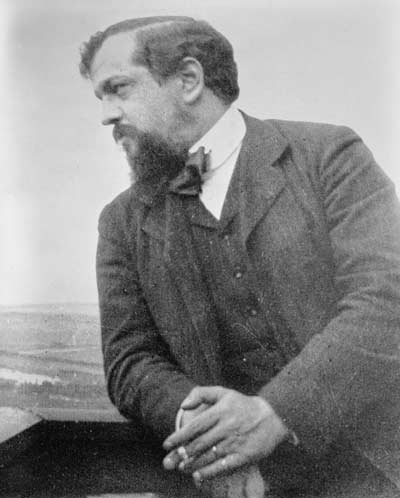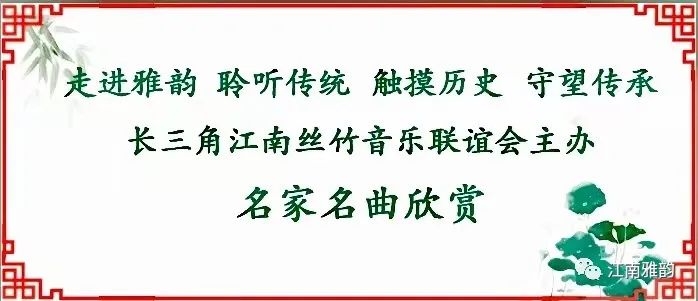
Get Flash Player
Composers have various reasons for writing—inspiration, pleasure, and money. In the case of Claude Debussy’s Saxophone Rhapsody the motivation was provided by money and a persistent music-lover named Mrs. Elise Hall.[1]
Mrs. Hall was a wealthy Boston matron who had taken up the saxophone. In 1895 she commissioned Debussy to compose a work for her instrument. As far as Debussy was concerned, Mrs. Hall’s commission had a good side and a bad side. On the bad side was his lack of familiarity with the saxophone. On the good side was the payment enclosed. He accepted the commission.
But he steadfastly avoided working on Mrs. Hall’s composition. He went to work on his opera Pelleas and Melisande. And a lot of other things—The Prelude to the Afternoon of a Faun, Nocturnes, and La Mer among them.[2] Suddenly eight years had passed.
One day in 1903, who should turn up at Debussy’s apartment but Mrs. Hall—the “femme[3] saxophone” as Debussy called her. She wanted to know where her saxophone composition was.
Debussy was caught. He forced himself to get started on something for what he thought of as “that aquatic instrument.” He still didn’t know much about it. He started doing some homework. Was the saxophone capable of romantic tenderness like the clarinet, he asked a friend in the know.[4] In 1904 he attended Mrs. Hall’s Paris recital. Wearing a pink gown, she honked away at something by Vincent d’Indy—another of her commissions.[5]
Another year went by. Debussy roughed out a draft of a piece and called it “Fantasie.” But even the title was slow to come. He tried “Oriental Rhapsody” and “Moorish Rhapsody” before settling on plain old “Rhapsody.” In 1911 he tried orchestrating it, but it was no go. He bundled up what he had and sent it incomplete to Mrs. Hall. Seven years later Debussy finally escaped the project—he died. His colleague Jean Jules Roger-Ducasse took on the orchestration and the Rhapsody for Saxophone was performed at last in Paris in 1919.
作曲家的创作动机形形色色——捕捉灵感,陶冶性情或养家糊口。克罗德•德彪西创作《萨克斯管狂想曲》的动机,则是为了金钱和一个叫伊丽斯•赫尔夫人的虔诚音乐迷。
赫尔夫人是一位喜欢萨克斯的富裕的波士顿女士,1895年,她委托德彪西写一部萨克斯管曲子。就德彪西而论,这项委托有利也有弊。弊是他对萨克斯管不熟悉,好处是报酬都已经付了。他还是同意了这项合作。
但他却压根就没有为赫尔夫人写曲子,而是忙于自己的歌剧《佩里亚斯与梅丽桑德》。还有很多其他作品——《牧神午后前奏曲》、《夜曲》和《大海》。一晃8年过去了。
1903年的一天,一个人出现在德彪西的公寓前——不是别人,正是被德彪西称为“萨克斯女人”的赫尔夫人,她问德彪西,她的萨克斯曲子在哪儿呢。
德彪西被逮住了。他还是对萨克斯知之甚少,就迫使自己重新开始了解那个被他视为“像水一样的乐器”。他做了一些练习,请教了一些懂萨克斯的朋友,他这才知道萨克斯管表达浪漫和细腻的品质就像单簧管。1904年,德彪西参加了赫尔夫人的独奏音乐会。赫尔夫人穿着粉红色长礼服,吹奏着文森特•丹第——她委托的另一个谱曲者为她写的曲子。
又过去了1年,德彪西草拟了一支萨克斯曲子的轮廓,暂时叫《幻想曲》。但即使正规曲名也很久才定下来。在平淡而老套的《狂想曲》正式名确定下来之前,他还尝试过《东方狂想曲》和《荒野狂想曲》。1911年,德彪西试图将曲子改编成管弦乐曲子,结果不成。他索性将还未完成的曲子打包匆匆忙忙地送给赫尔夫人。7 年后,德彪西终于逃脱了这件差事——因为他死了。他的同事让•朱尼斯•罗杰—迪卡斯拿起这部管弦乐进行改编,直到1919年,《萨克斯狂想曲》才在巴黎上演。





